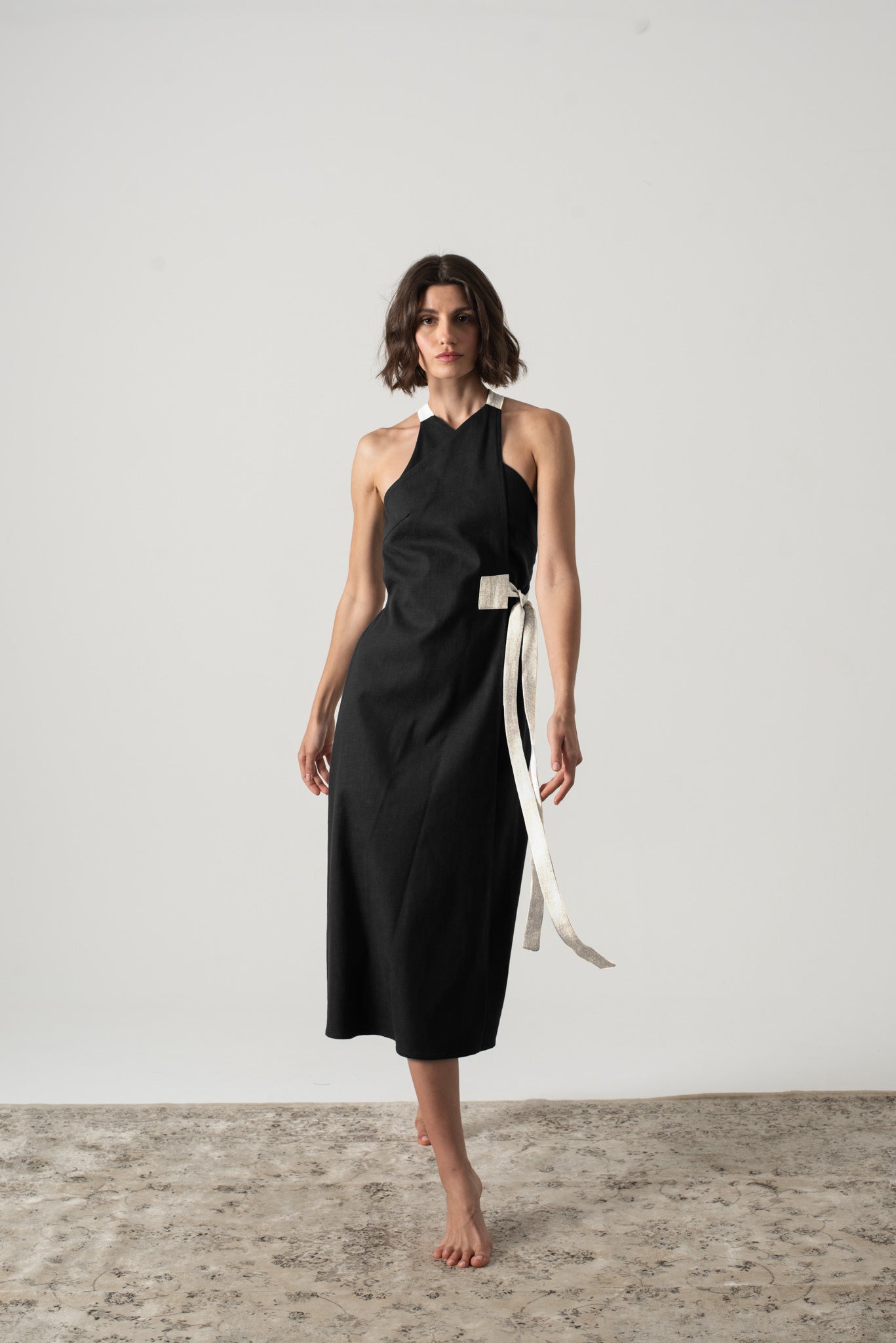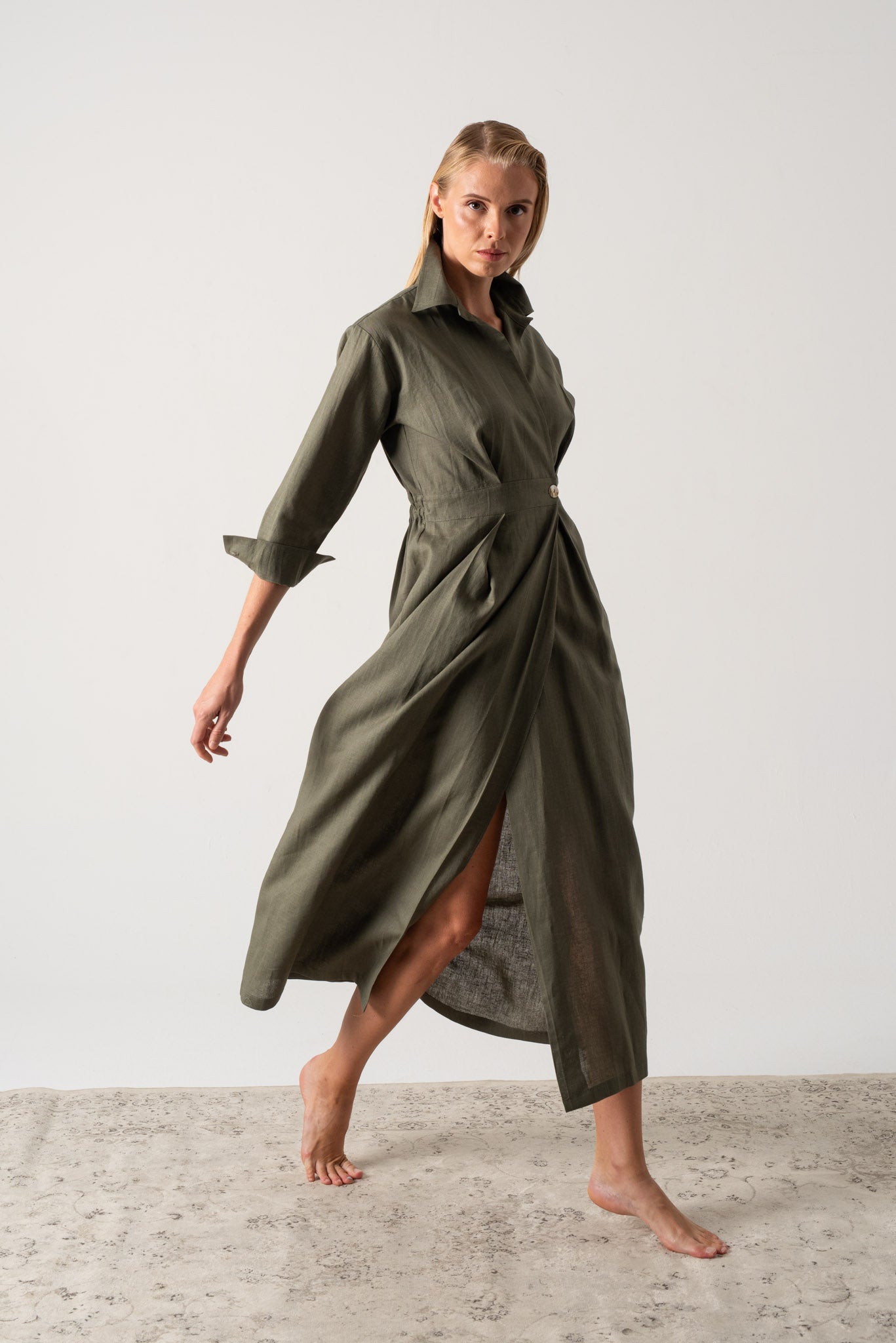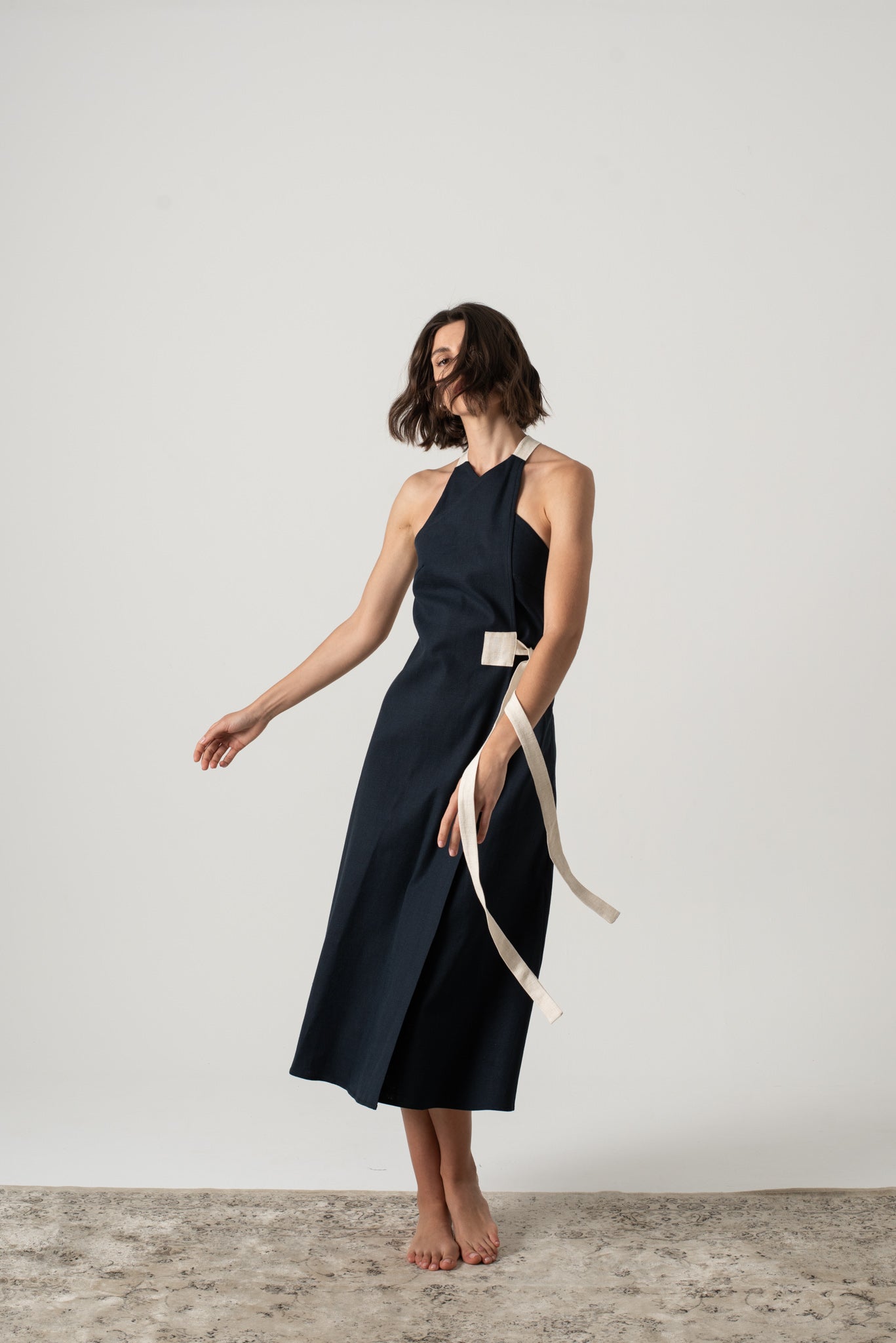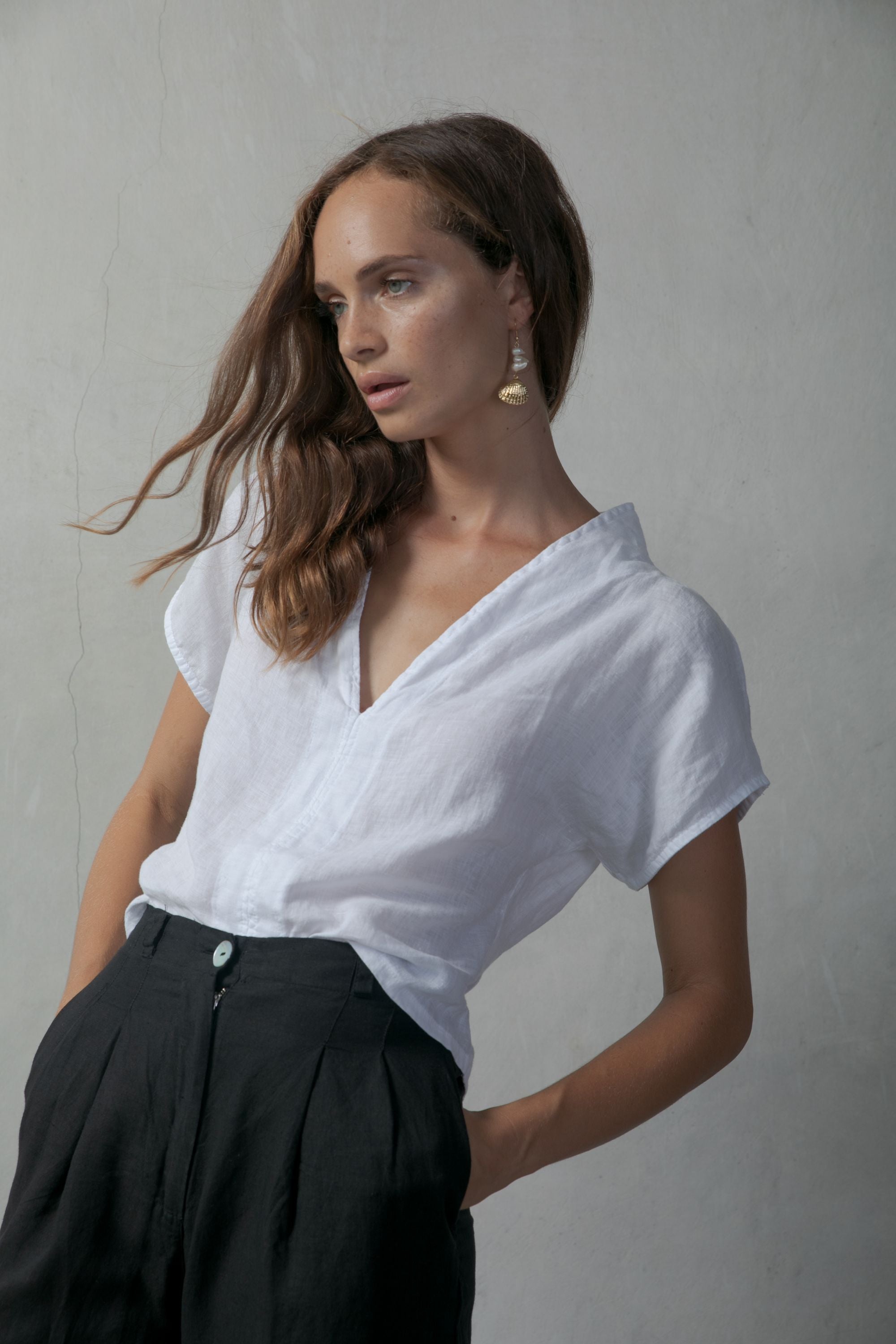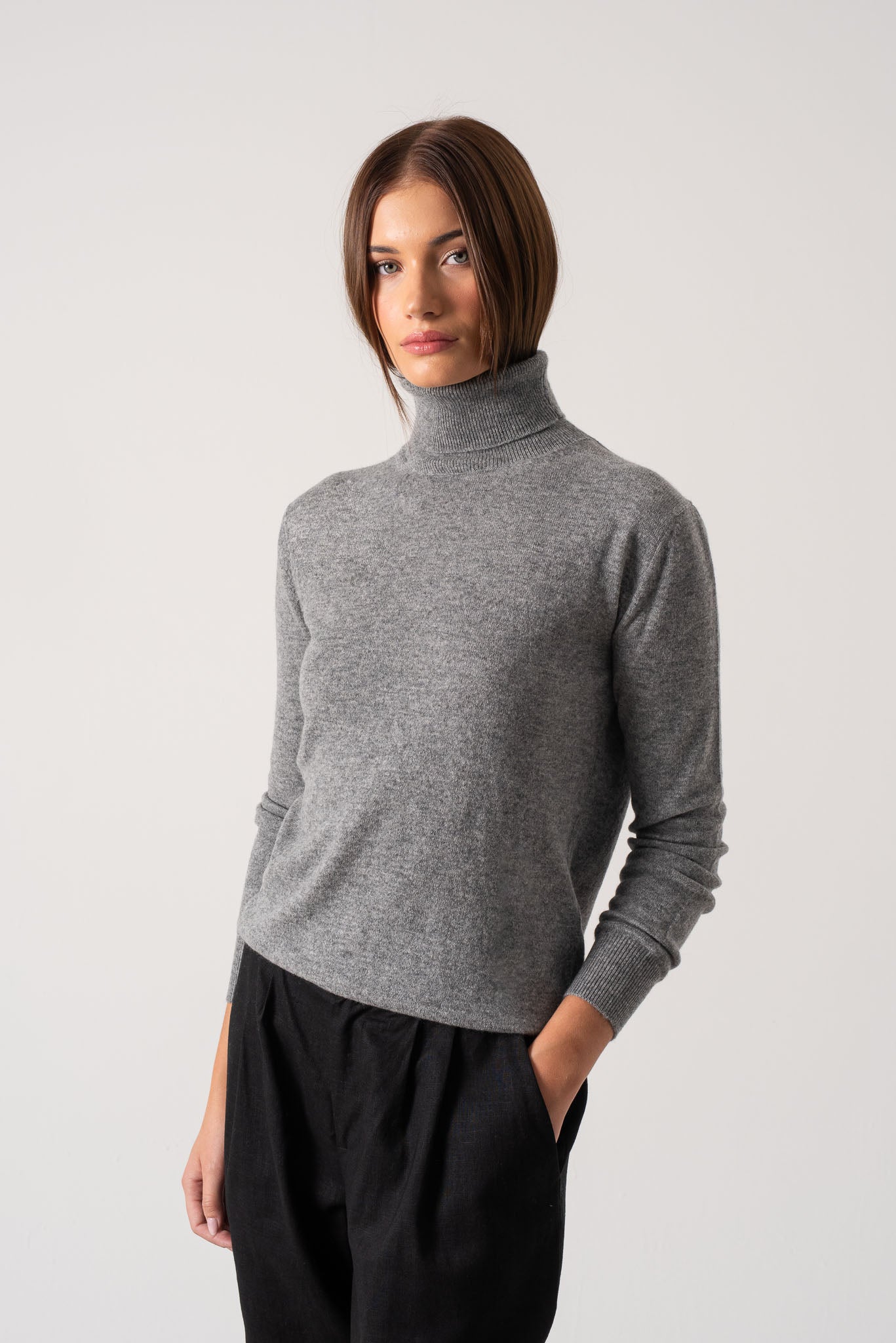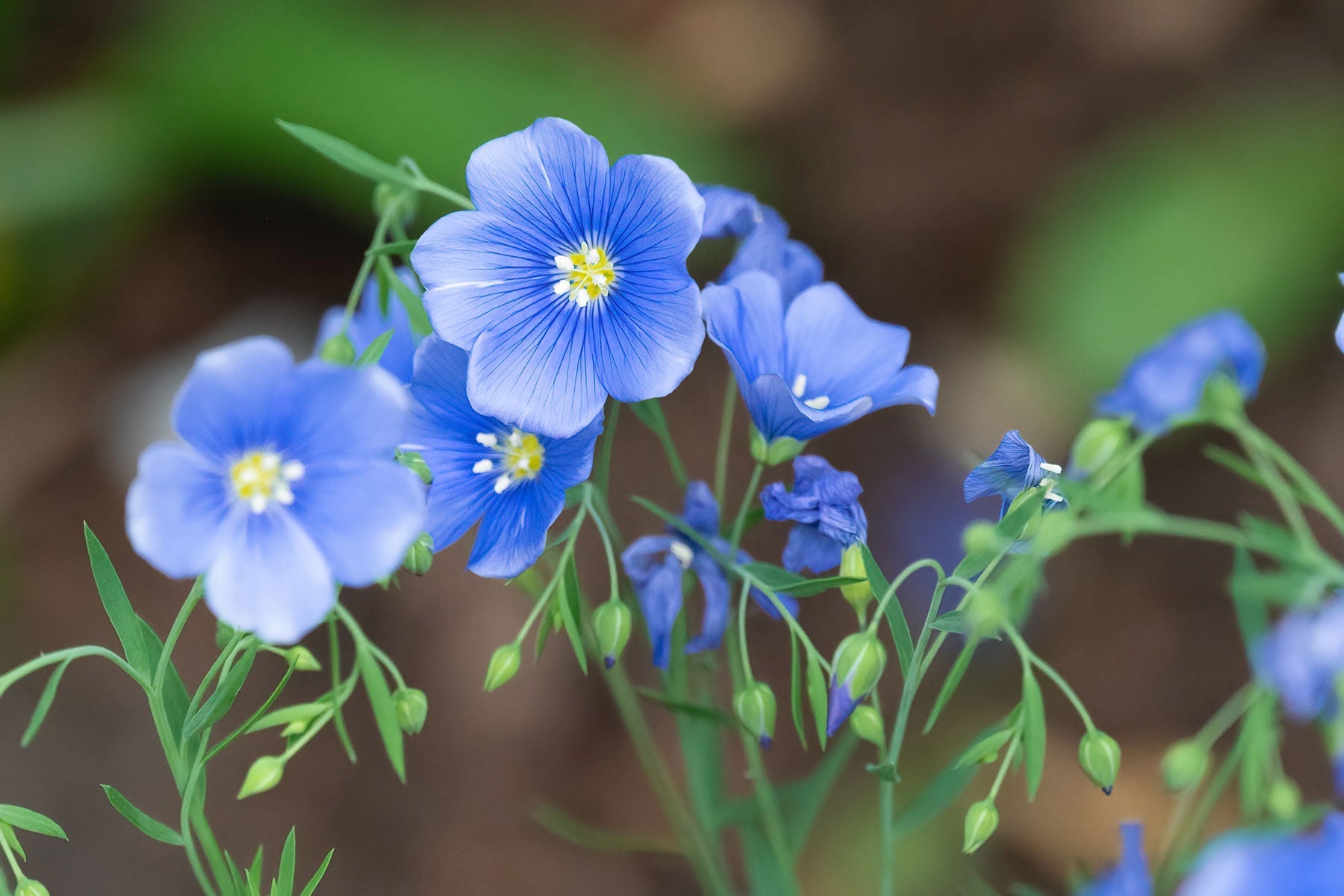We answer the question, what is flax linen and look at its colourful history and what makes this fabric so special.
What in the world is flax?
Is it as life-changing as matcha lattes? Probably not, but it comes close. We'll give you a clue. Flax is a multi-hyphenate wonder brought to us by nature that can be both worn and eaten. Yes, eaten. Now, that's called multi-tasking.
So, if you're stuck on a desert island, can you take a bite out of one of your favourite linen dresses you just happened to get stranded in? Not quite, but you'll be at the destination of a lifetime, so make sure to take some final pictures. More on the eating part later.
Wearing flax linen is not for the faint of heart — prepare to be copied. People just won't be able to help themselves. You'll look that good.
Now, no more mucking about. Let's get on with the blog. You'll learn (we're professors now) how flax linen is made, if there are any differences between flax linen vs linen, and so much more. Maybe we'll also throw in a corny joke or two and some pretty clothes to make the ride more enjoyable.

What is flax?
Flax comes from the flax plant. Who would have thought? Now, if only parallel parking were that simple. Flax naturally grows in Western Europe and China.
It's grown for two main purposes. One, it's used to make flax seeds, which is a nutritious food eaten by people and livestock. Sprinkle these seeds over a bowl of porridge — delicious. When did this blog turn into the Martha Stewart show?
Two. Flax fibres are used to weave the wonderful fabric we all know and adore linen. (I Will Always Love You starts playing). More reasons why we love linen are hiding in our blog. Linen can then be woven into delightful clothing, bedding and table linens.

What is flax linen?
Flax linen is a heavenly textile crafted from the flax plant. It is a bast fibre, which means that it is made from the stems of the plant. All of linen's best characteristics, its strength, durability and moisture-wicking properties are thanks to the bast fibre.
Flax is known for its exclusivity and rarity. It represents only 1% of all the textiles in the world. When you wear linen, you also instantly become rare and exclusive just by way of association.
Wearing linen is like wearing a bit of history. It is the world's first textile, and people (us included!) continue to be obsessed with it. Worn by everyone from Alexander the Great to Julius Caesar and modern royals, linen is truly timeless. If it's good enough for them, why aren't you wearing it?
Linen is known to have been used as a textile since as early as 5000 BC by everyone from the Romans to the Ancient Egyptians. The Romans valued the textile so much that they named it the linum usitatissimum, which means the most useful.
Fun fact about linen that will hopefully come up at family Trivia night: the US dollar bill is made from the textile. Who knew? To be precise, it's made from 25% linen and 60% cotton. That's proof enough just how valuable the fabric really is.
Are all flax fibres the same?
The longer flax fibres are more expensive and premium. They're where linen's signature sheen comes from. In comparison, cotton is made from seed fibres, which are roughly 3.5cm long, while flax fibres are typically 90cm long.
Just like people are different, so is linen. Some of us wake up before our alarms and are basically considered superheroes, while others, well… don't. The longer, unbroken line fibres from the flax plant are prized in the fashion world. These longer fibres are spun into yarn and used to make the finest linen tops.

Is flax linen different from linen?
No, flax isn't different from linen. Buzz words and marketing lingo strike again. Flax and linen both mean the same thing in the textile industry.
The word flax is added to some product descriptions to give the illusion that they're more natural or unprocessed. But that isn't the case.
When we're talking about fabrics, we could use the word flax to represent the plant before harvesting and processing. Then, use the term flax linen once the plant has been transformed into a textile.
The differences between flax and linen are imperceptible, if there are any at all. But what you should look out for when choosing linen clothing is the production process.
Most flax is grown in Western Europe. But then, the fibres can be shipped to China or India for processing. This is where quality and craftsmanship can be hindered. So it's essential to look closely at where your garment is made, even if it is European linen.
We can't guarantee there won't be any traffic at 5 pm, but we can stand behind the craftsmanship of our garments. LUXMII Linen is organic-certified and handmade by tailors in Portugal to ensure the finest quality.

How Is Flax Linen Made?
There's no straightforward recipe to make flax linen. It takes lots of expertise, time, good weather and plenty of hands that are willing to get dirty. But here are the key steps that determine the quality of linen.
- Retting
Once the flax plant is ready to be harvested, it undergoes a process called retting. It's when the flax plant is left out in the fields for a couple of weeks to allow the weather to break down the stalks and make them easier to harvest. This process needs to be done by a master. If they're left out too long, the stalks can rot and lose all their strength.
- Processing
After the retting stage, it's time to break down the woody stalks of the plant. This is often done by machines.
- Combing
Once crushed, the flax fibres go through a fine comb machine. This separates the long fibres from the short, undesirable ones.
- Spinning
The long line fibres are spun into yarn and then woven into the finest linen clothing. The shorter tow fibres don't go to waste. These are used to make coarser pieces, such as canvas.

Best Characteristics Of Linen
Strongest natural fibre
Wear your favourite linen pieces without a care in the world. The super long fibres and tight weave of linen, make it one of the most strongest and durable natural textiles. It's 30% stronger than cotton and can be worn again and again.
Thermo-regulating
Get a fabric that does all the hard work for you and keeps you looking your best while doing it. Linen works its magic and keeps you warm when it's cold and cool during the Summertime. You guessed it. This makes linen a truly seasonless fabric. Learn how to style linen dresses for women for every season.
Sweat-wicking
As if that isn't enough, linen is also naturally sweat-wicking. That means that if you're wearing your best black linen shirt and start getting hot, the sweat will disappear quicker than your phone's battery.
High on the sustainability meter
As if you need any more excuses to shop linen, it's also one of the most sustainable natural textiles on the market. How much fertilizer or pesticides are required to grow flax? Zero. That's the same number of things we dislike about linen, zero. Plus, it needs very little water. Often, natural rainfall is enough.
Biodegradable, renewable & recyclable
Linen can be described with only the most sparkling of adjectives. Biodegradable, renewable and recyclable, it's both good for the environment and fashion.

Conclusion: What Is Flax Linen?
Imagine if we had to run a lap of a footy field every time we said flax linen in this blog. Sadly for us, we're going to have to say it a few more times and then probably pass out from all that running.
What is flax linen?
- Flax linen is a textile made from the flax plant. Is it rude to call fabrics old? For linen, it's a bragging right. It's the world's oldest textile, proven to be more than 30,000 years old and still adored today. That's a huge achievement. Some of us can't even keep a plant alive for three days.
- Flax linen is a rare, completely natural fabric. It makes up just 1% of all textile production. So when you invest in linen, you're investing in exclusivity and quality.
- Linen fabric is made from the stems of the flax plant. These are woody and give linen all its amazing characteristics, such as durability and breathability.
- There is no real difference between flax linen and linen. Both words usually mean the same thing, AKA a fabric made from linen. Where there is some confusion is that brands use the term flax to make their products seem superior to others and more natural when they're not.
- Look at how linen clothing is made. This is one of the most important factors when determining the quality of the linen. Check where the linen is grown, whether it is organic and in what country the flax is processed. Then you'll get a clear picture of the quality.

